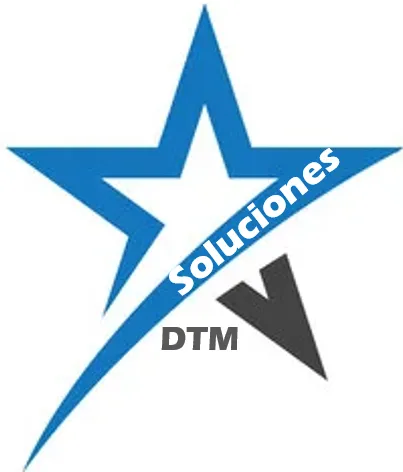This is particularly useful for an acquirer, to evaluate which businesses in an industry are most worthy of an acquisition attempt. Vertical analysis compares each line item on a financial statement as a percentage of a base figure within the same statement. Revenue usually serves as the base figure (100%) on the income statement, while total assets, total liabilities, and equity serve as the base on the balance sheet. Accounting software is a computer program that is used to perform accounting analysis. Accounting software can be used to perform basic tasks such as preparing financial statements, creating budgets, and tracking cash flow.
The intent is to discern any spikes or declines in the data that could be used as the basis for a more detailed examination of financial results. A sample horizontal analysis of an income statement over several periods appears in the following exhibit. Financial statements are maintained by companies daily and used internally for business management.
Nonetheless, Tracy warns that cash flows only show part of the picture and give no information about the business’ profit or financial condition. Since cash flows only show part of the picture, other financial reports are needed. Financial analysis is the process of evaluating a company’s financial performance through the examination of its financial statements. This analysis involves looking at various elements such as the income statement, balance sheet, and cash flow statement to assess the financial position of the organization.
Ratio analysis in accounting is a crucial tool for evaluating the financial health of a business. It involves the use of various mathematical relationships derived from financial statements to assess different aspects of a company’s performance. These ratios provide insights into areas such as liquidity, profitability, and solvency, allowing stakeholders to make informed decisions. Financial statement analysis is the process of examining and interpreting a company’s financial statements to assess its financial performance, position, and overall health. This analysis helps various stakeholders, including investors, creditors, analysts, and management, gain insights into a company’s strengths, weaknesses, opportunities, and risks.
- Arar (2012) wrote that small businesses have «more accounting software options than ever, including Web-based subscriptions.»
- Accurate financial records are essential not only for internal management but also for compliance with legal and regulatory requirements, particularly for publicly traded companies.
- The difference between high and low gearing comes down to the balance between debt and equity to fund your business.
- The process typically involves looking at whether a variance was favorable or unfavorable and then breaking it down to determine what the root cause of it was.
Accounts
A market this large seems as if it would be very attractive to lenders and could offer many opportunities. However, Scott (p. 105) warns that the market is large but hardly uniform and can be plagued with problems. These companies may have undependable financials with «volatile earnings swings» and are more likely to present a risk of fraud. The small business market is also difficult to categorize by industry because descriptive factors and trends may not be consistent across industry lines. Scott recommends using stringent, consistent, and traditional underwriting practices that treat each case as a unique one and consider the unique factors that affect the business. This means a careful examination of financial documents within the context of the business.
It provides information regarding expenses and income of the firm for two or more than types of accounting analysis two years. Data analytics and accounting share similarities as both involve examining and interpreting data to gain insights, but they differ in their focus, with accounting primarily concerned with financial data. Workers might be hesitant to embrace new technologies and methods, especially if they are used to old-school accounting practices.
Furthermore, among various types of financial analysis, such analysis helps top management adopt preventive strategies that can help avoid any major setbacks. Financial analysis means scrutinizing the financial statement to reach a productive outcome that helps investors and other stakeholders maintain their relationship with the company. There are numerous types that experts and analysts use to analyze financial information. The United States Sarbanes-Oxley act of 2002 is federal legislation that was enacted in response to many of the corporate scandals such as Enron. The act governs accounting and financial reporting and provides for holding corporate officers and even accounting and auditing personnel responsible for giving accurate information about the financial health of corporations. The most common financial reports are the balance sheet and the income statement.
Data Analysis
He has successfully transitioned multiple processes related to Records to Reports, Financial and Management Reporting from different geographies. This includes transitions from the USA, Indonesia, and the Netherlands and some of the remote transitions. Analysts use these reports to identify financial trends, assess stability, and compare performance across different periods. Finally, another development is the increased use of mobile apps in accounting analysis. These apps allow users to accessaccounting information and data from anywhere they are, which can be helpful for busy professionals.
This technique is particularly useful for forecasting revenue, managing costs, and identifying potential downturns before they occur. When doing comprehensive financial statement analysis, analysts typically use multiple years of data to facilitate horizontal analysis. Each financial statement is also analyzed with vertical analysis to understand how different categories of the statement are influencing results. Finally, ratio analysis can be used to isolate some performance metrics in each statement and bring together data points across statements collectively. Companies use the balance sheet, income statement, and cash flow statement to manage the operations of their business and to provide transparency to their stakeholders.
Financial Statement Analysis
Operational analysts are usually interested in understanding how operations are affecting performance and making recommendations about how to improve efficiency. Managerial analysts are usually concerned with making decisions that will improve company performance. The income statement is for a period of one year and shows the total sales revenue for the year. Subtracted from sales revenue is the cost of goods sold or the expenses a company incurs in producing finished goods to sell.
- Private companies may keep a valuation statement as they progress toward potentially going public.
- A high level of riskiness means that the company is risky and may not be worth investing in.
- Whenever an investor intends to compare the financial statements of two organisations, there is a need for a common scale in order to match the two distinct businesses for investment purposes.
- In conclusion, accounting reports are integral tools for assessing a company’s financial well-being and performance.
- He brings a wealth of expertise in business valuations and financial analyses, supporting clients in buy/sell transactions, family law matters, shareholder litigation, financial reporting, and estate and gift taxation.
Vertical analysis
Accounting software is also available that provides more advanced features such as fraud detection and forecasting. The accounting and finance modules in an ERP system provide finance teams with the capabilities they need to centrally manage the financial aspects of an organization. These tools include standard accounting functionality, such as reporting, accounts payable and expenses, accounts receivables and cash management, and revenue recognition. ERP also can provide advanced capabilities, such as budgeting, forecasting, and order processing.
How do businesses and investors use ratio analysis?
Accounting analysis is the process of evaluating financial statements and making judgments about whether they are accurate and complete. A variety of tools are used to perform accounting analysis, including auditing, forensic accounting, and financial statement analysis. The use of ERP software within accounting and finance functions can benefit the entire business, connecting the finance side to operations for improved decision-making and efficiency. Ratio analysis shows the relationship between financial information, the way it behaves over time and what risks are implied by the behavior (Morgenson & Harvey, 2002).
Sunil Shah has more than 12 years of professional work experience in valuation catering to technology and healthcare companies. His responsibilities include managing multiple clients and building client relationships. Gnanendra Rathod has almost 15 years of experience in US, UK and Canadian Tax compliances. Prior to joining Knowcraft Analytics he worked with medium to big size CPA firms with a variety of individual clients as well as business verticals.
Some of the most common types of analysis are financial analysis, operational analysis, and managerial analysis. Financial analysis is used to evaluate a company’s financial position, performance, and cash flow. Operational analysis is used to understand how a company’s operations are affecting its financial performance. Managerial analysis is used to make decisions about how to best operate a company.
Finance and accounting teams play a leading role in key functions, including capital allocation and cash flow management; financial monitoring, reporting, and auditing; and budgeting and forecasting. The benefits these teams get from an effective ERP system ultimately help them work faster, provide better data to decision-makers, and enable them to have greater confidence in their analyses and reporting. ERP then delivers the data and capabilities needed for finance and accounting teams to run that analysis and planning and to share the results in meaningful and actionable ways. For example, an ERP system can help organize who your customers are, what they owe, and how often they make a purchase. It can integrate with sales and supply chain systems to intelligently manage your operations.
This classification of financial analysis techniques helps businesses and investors choose the best approach depending on their goals, whether for long-term investment decisions or short-term market speculation. In accounting, account analysis is quite complex and involves an in-depth understanding of both the data and the company. It is usually performed by an experienced cost accountant, possibly with the help of one of the company’s managers, who deals closely with the company’s costs. Accounting analysis is the process of analyzing financial statements to gain insights into a company’s performance. One such development is the increased use of artificial intelligence (AI) in accounting analysis. AI has been used to help with tasks such as analyzing financial data, creating reports, and making financial decisions.



